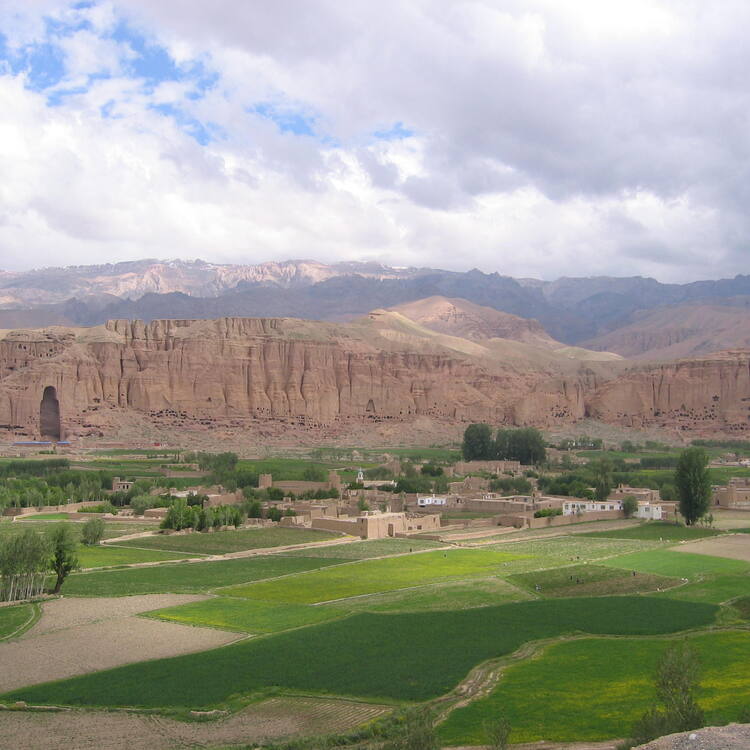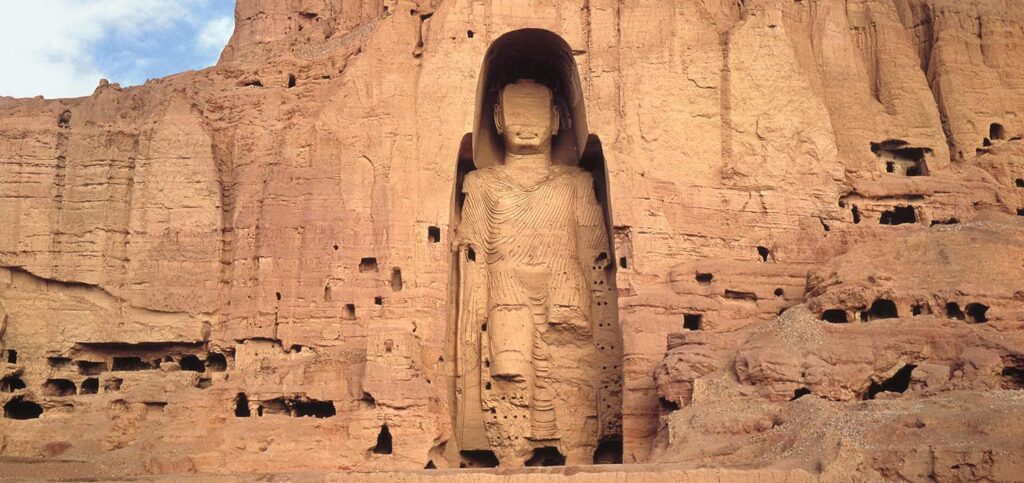Bamiyan Valley, situated in the heart of Afghanistan, is a place of profound historical significance and breathtaking natural beauty. Nestled amidst the towering Hindu Kush mountains, this valley has been a center of culture and spirituality for centuries. Renowned for its majestic Buddhas carved into the cliffs, Bamiyan stands as a testament to the rich tapestry of human history, merging spiritual heritage with stunning scenery.
Historical Significance
Bamiyan Valley’s history dates back to ancient times when it was a vital crossroads for trade routes connecting the East and the West. It served as a prominent stop along the Silk Road, facilitating cultural exchange between diverse civilizations. The area flourished significantly during the 2nd century, particularly under the influence of Buddhism.
The most notable remnants from this period are the colossal statues of the Buddha, carved into the sandstone cliffs during the 5th and 6th centuries. The larger of the two statues stood at about 55 meters tall, showcasing the artistry and dedication of the sculptors of that era. Regrettably, in March 2001, these statues were tragically destroyed by the Taliban, marking a dark time in the valley’s history. Despite this loss, Bamiyan remains a symbol of resilience and hope, with efforts ongoing to preserve and restore the site’s cultural heritage.
Cultural Heritage
Bamiyan is not solely defined by its Buddhist past; it is also home to the Hazara people, an ethno-linguistic group known for its rich traditions and customs. The Hazara culture, infused with elements of both Central Asian and Persian influences, is characterized by vibrant local crafts, music, and festivals. The region’s landscape, with its majestic mountains and fertile valleys, provides a backdrop for agricultural practices that have sustained the local population for generations.
More:Read About On Cusco, Peru: Gateway to Machu Picchu
The town of Bamiyan is vibrant and bustling, featuring the iconic bazaars where handicrafts, traditional clothing, and local delicacies are sold. The hospitality of the Hazara people is legendary, and visitors are often welcomed with open arms. Cultural initiatives focus on promoting the arts, revitalizing traditional crafts, and fostering community spirit.
Natural Beauty
Bamiyan Valley’s landscape is a spectacle of natural beauty, characterized by rugged mountains, lush green valleys, and clear blue skies. The region boasts a unique topography, with stunning rock formations and deep gorges that are perfect for hiking and exploration. The picturesque landscape is dotted with ancient fortresses, remnants of the diverse civilizations that inhabited the area over the centuries.
One of the valley’s highlights is the Band-e-Amir National Park, Afghanistan’s first national park, established to protect its stunning lakes and unique geological formations. The park is famous for its deep blue lakes formed by mineral springs, contrasting beautifully with the surrounding red and brown cliffs. Adventure seekers can engage in activities such as trekking, picnicking, and even camping under the stars, surrounded by the tranquility of nature.
Religious Diversity
Beyond its Buddhist heritage, Bamiyan Valley hosts a diverse array of religious communities. Islam is the predominant religion, and the valley features numerous mosques and shrines reflecting Islamic architecture. The coexistence of different faiths in Bamiyan highlights its rich spiritual legacy. Festivals, such as Nowruz (Persian New Year), are celebrated with great fervor, bringing together people from various backgrounds to partake in traditional music, dance, and feasting.
Challenges and Resilience
Despite its beauty and cultural richness, Bamiyan Valley faces numerous challenges. Years of conflict, political instability, and natural disasters have left their mark on the region, impacting infrastructure and access to basic services. However, the spirit of the people remains unyielding, and efforts to rebuild and promote tourism are gaining momentum.
Local communities are working together to restore historical sites, maintain their cultural heritage, and develop sustainable tourism that benefits the valley’s economy while preserving its traditions. The potential for tourism in Bamiyan is enormous, with its unique history and stunning landscapes drawing the interest of travelers seeking authentic experiences away from the conventional paths.
The Path Forward
As the world comes to recognize the beauty and diversity of Bamiyan Valley, it is essential to emphasize the importance of preserving its cultural heritage and natural environment. Sustainable tourism can provide much-needed income and opportunities for local communities while ensuring that the valley’s unique history is honored and protected for future generations.
More: Wanted to download Odisha Magazines, visit here
International collaborations and local initiatives are crucial for fostering understanding and respect for Bamiyan’s rich history. Education and awareness-raising campaigns can help highlight the valley’s significance, encouraging travelers to appreciate its beauty while respecting its cultural and historical context.
Conclusion
Bamiyan Valley is a remarkable tapestry woven with the threads of history, culture, and nature. From its majestic Buddhas to its vibrant local communities, the valley stands as a symbol of resilience and hope. As the world watches, Bamiyan’s story continues to unfold—a narrative of beauty, diversity, and the enduring human spirit.

By embracing sustainable tourism and fostering a deep respect for its heritage, Bamiyan has the potential to shine once more as a beacon of culture and history, inviting travelers to witness its splendor and share in its journey toward renewal.
FAQ For The Enchanting Bamiyan Valley: History and Nature
Where is Bamiyan Valley located?
Bamiyan Valley is situated in central Afghanistan, approximately 240 kilometers northwest of Kabul. It is known for its breathtaking landscapes and historical significance.
What is the historical significance of Bamiyan Valley?
Bamiyan Valley is renowned for its ancient Buddhist heritage, particularly the towering Buddhas carved into the cliffs, which stood for centuries before being destroyed in 2001. The area is a UNESCO World Heritage site, reflecting its cultural and historical importance.
What can I see in Bamiyan Valley?
Visitors can explore the remnants of the Buddha statues, ancient caves, and various archaeological sites. The stunning natural scenery, including rugged mountains and fertile valleys, also offers opportunities for hiking and photography.
How can I get to Bamiyan Valley?
Bamiyan Valley can be accessed by road from Kabul, with various transportation options available, including private vehicles and buses. Travel times can vary based on road conditions.
What is the best time to visit Bamiyan Valley?
The optimal time to visit is during spring (March to May) and autumn (September to November) when the weather is pleasant and the landscapes are particularly beautiful.

